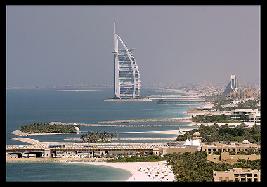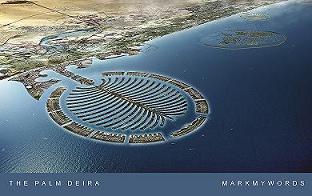Search Powered by Google

Information infrastructure (stage 4)
The history of the Internet in UAE (United Arab Emirates) goes back to the year 1995 when Etisalat, the National Telecommunications Carrier, started providing Internet services to all Categories of users, including academic, business, industry, and home users. Since 1995, the number of Internet users in UAE has grown exponentially and reached 240,000 subscribers. In March 2000, Emirates Internet and Multimedia (EIM) was established as a Strategic Business Unit within Etisalat to be the first Internet Service Provider (ISP) in UAE. Even though a newly established unit, EIM has been playing a strategic role in quickly responding to the needs of Internet users, gaining a competitive edge by acquiring state of-the-art Internet backbone and infrastructures, and enabling people of all walks of life to have access to the Internet. UAE is the most wired nation in the Middle East and one of the top nations of the online world. With a customer base of about quarter a million, EIM has around 25 % of Internet users in the Arab World. While the number of Internet subscribers is 240,000, the actual number of Internet users in UAE is about 775,000 users. Mobile penetration in the UAE stood at almost 75% at the end of 2006. Mobile subscriber growth has been fuelled by increased levels of competition, as second GSM operators launch services in markets across the region. Internet usage has also been on the increase, posting internet user penetration levels of almost 30% at the end of 2006. The Gulf Cooperation Council (GCC) states have created the Fiber Optic Gulf7 (FOG) network, a 1,300 km cable system jointly owned by the national telecommunications operators of Kuwait, Bahrain, Qatar, and the United Arab Emirates. The next two diagrams indicate the wired connectivity and the wireless subscriber.
.jpg)
.jpg)
Internet availability (stage 4)
The Internet market in UAE is in the growth stage with the early majority of the technology adopters constituting the current customer base of EIM. Late adopters and laggards are expected to get online within the coming few years to make the UAE the fastest growing digital society in the region. Residents of the UAE can subscribe to the Internet and choose from several access methods to meet their surfing needs. Users of the Internet who do not wish to subscribe to the Internet, but need to have access to the Internet, can use public Internet access points such as “Dial ‘N’ Surf”, “Internet Kiosks”, and “Internet Surfing Centers”. These are services that are designed for both residents and visitors who need to access the Internet while on the move and without having to subscribe to the ISP. EIM makes Internet access available at public places under the name of Internet Surfing Centers (ISC). The ISCs are similar to traditional cyber cafés and are available at public places such as shopping centers, restaurants, and gaming centers. EIM provides ADSL connectivity to these places, which use their own PCs to provide Internet access to their customers. At present, there are 55 ISCs in UAE and this number is expected to grow significantly. The following diagram represents the internet subscribers through the last five years.
.jpg)
Internet affordability (stage 3)
Access to the Internet is available to businesses and individuals at competitive rates. EIM offers its customers, both business and home users, a competitive rate in terms of
subscription fees and access charges. Subscription fees for most of the residential
service charge stand at AED20 ($5.5) and access charge for dial-up connection is AED1.80 ($0.5) (peak hrs) and AED1.00 ($0.27) (off-peak hrs), whereas customers who wants to a high speed internet, the main internet provider provides them with DSL of speed starting at 512Kbps to 2Mbps with prices started at $165 to $360 with one time installation charge $55. For businesses, EIM provides various methods of Internet access, using leased access and ADSL technology, with varying rates based on the amount bandwidth required by the customer.
Network speed and quality (stage 4)
EIM provides various access methods to the Internet, including dial-up connection at
56Kbps, ISDN at 64Kbps and 128Kbps, ADSL connections at various speeds of 384Kbps and 512Kbps, and various speeds of leased lines. The Internet bandwidth connection to the outside world is through 3xSTM-1 (155MB) connected to New York, San Francisco and UK. The quality of connection in UAE is one of the most high quality connections in the world. By quick estimation, the quality is measured by the following factors call setup success rate (CSSR), Hand Over Success Rate (HOSR), and call drop rate. In UAE, the CSSR is approximately greater than 99%, the HOSR is greater than 98% and the call drop rate is less than 0.9%.
Hardware and software (stage 4)
The UAE hardware market is one of the largest in the region, estimated at about US$746mn in 2005, up from US$686mn in 2004. The 2005-2010 CAGR (compound annual growth rate) for the hardware sector is expected to be in the region of 14%. As elsewhere in the Gulf, the PC market is being driven by demand for notebooks, which are expected to account for around 60% of sales over the forecast period. However, desktops are still important, particularly for the SMB (server message block) segment, which remains a significant, under-penetrated group in the market. Investment in education and e-government, fuelled by new oil revenues, will lead to desktop rollouts in schools, colleges and government offices across the Emirates. In terms of consumer demand, this will be led by preference for mobility and flexibility with strong interest in additional features such as GPS, W-LAN and Bluetooth.
UAE's software spending will boom from US$236mn in 2005 to US$471mn in 2010. The central geographic areas for the software industry are Dubai, Abu Dhabi, and Sharjah, with global software companies drawn to the UAE’s free trade zones for tax-free, relatively unhindered competition. Outside of the free trade zones, however, the software market is fairly modest. The market will have a CAGR of 15% between 2005-2010, with the UAE being of the region’s fastest growing ERP markets, as more businesses realize the benefits of efficient management of resources within their internal processes. CRM (customer relation management) will account for approaching 20% of enterprise application sales. Fewer than 2% of small-to-medium size companies in the Middle East region have a specialized CRM application in place. However, the UAE is seen as being ahead of other regional markets by six months to a year in terms of CRM adoption. During the next five years, in addition to CRM and ERP, high growth categories are set to include storage and security products.
Service and support (stage 4)
The service providers for communication and internet provide a high commitment with their customers. Since almost 90% of the UAE are connected through different ways, the waiting periods for installation or problem solving are much less and sometimes can be finished at the same day. Requesting a service in any kind "land line, wireless service or high speed internet" usually take one day to process and the customer can use the service in 24 hours which make the connectivity readiness high.

